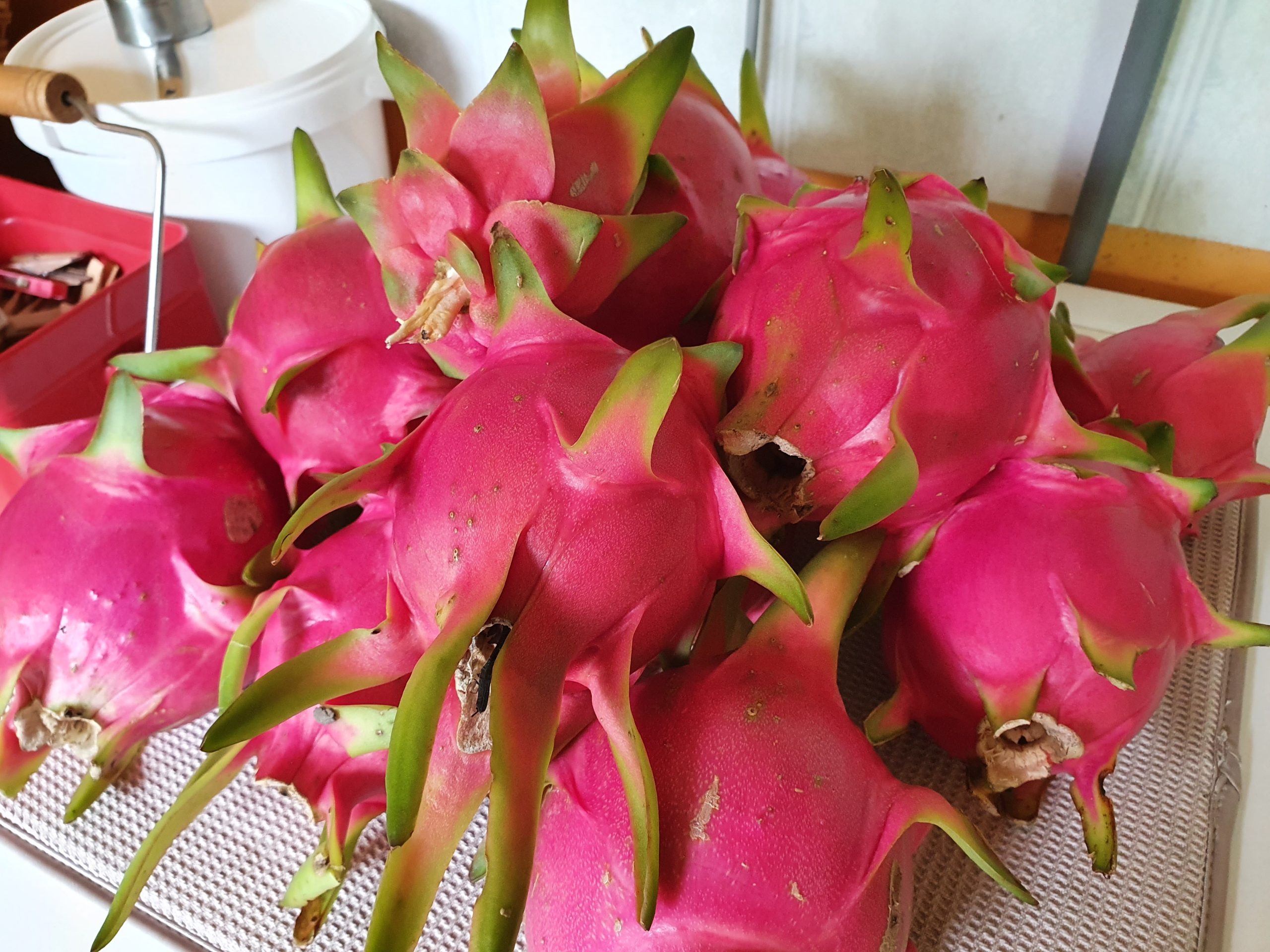I’ve always been a gardener. Yes, plants have always been a big part of my life. Even as a young child I had a little area of the garden where I tried to grow geraniums and other flowers. I remember being really upset at my father when he spoiled.my little mulching program where I used to compost the dead leaves. My Auntie Win used to take me to Maryborough’s beautiful botanical gardens. We saw graceful swans on a lily pond with a waterfall tumbling over the rocks and I was entranced by it. I remember a fern house with lush green ferns. There was a lovely view over the Mary River as you walked along a path towards an ornate rotunda.
As a young adult was try to grow some of my own food, firstly I did this in a series of share houses as a student. Later, after I graduated, the first job I had was as a potter at Tomaree on the outskirts of Gympie and we grew all sorts of things in the shaley soil there. I really made a point of learning how to use those things in cooking and to make palatable dishes from unfamiliar things like broad beans that you could grow yourself. I’m not sure if that is an innate urge towards self-sufficiency or a bit of Scottish frugality – perhaps both!
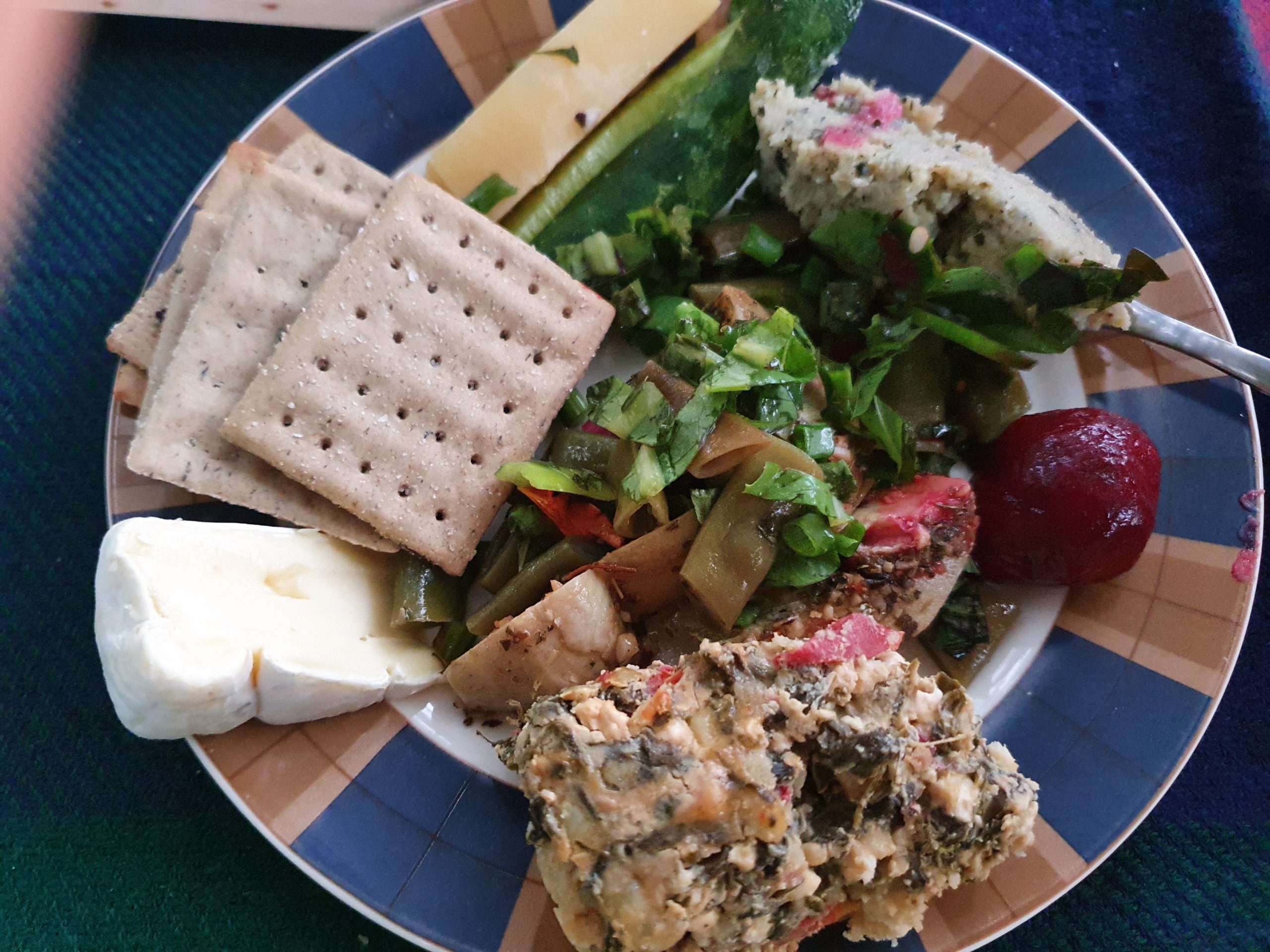
My daughter was born in 1984 and I subsequently did a Permaculture certificate with Lea Harrison at Tyalgam in New South Wales. I never undertook paid consulting work as a permaculture designer but I had plenty of opportunities in my life to apply the principles. On the first property I bought a share in, I built a pole house and started growing food on sandy soil to the east of Gympie. That’s where I met my partner, Glen, and he was also very keen on growing food. The people at the local health food shop had a nickname for him – Organic. Something that we had in common and had both been committed to before we met was opposing Plant Variety Rights legislation. Plant Variety Rights is a system of patenting seeds, usually vegetable varieties, which the developers can demonstrate are distinct, uniform and stable. We both saw this type of legislation as an attack on heirloom varieties of seeds which have been grown successfully for many generations with very little inputs. The Green Revolution was supposed to improve food production world-wide but in fact it destroyed many generations of peasant farming in India and in many other countries as well.
I was involved with several friends in setting up a Permaculture group in Gympie and that group is still in existence today. It still champions open-pollinated heirloom varieties of vegetable seeds. In fact there are even still some of the same members involved although many others have changed over the years as people have moved on or passed on. We left the farm some 20 years ago and now it all happens on a suburban quarter acre block. Glen is a great advocate of the biodynamic method founded by Dr Rudolf Steiner and we make compost the slow way, turning after 6 months.
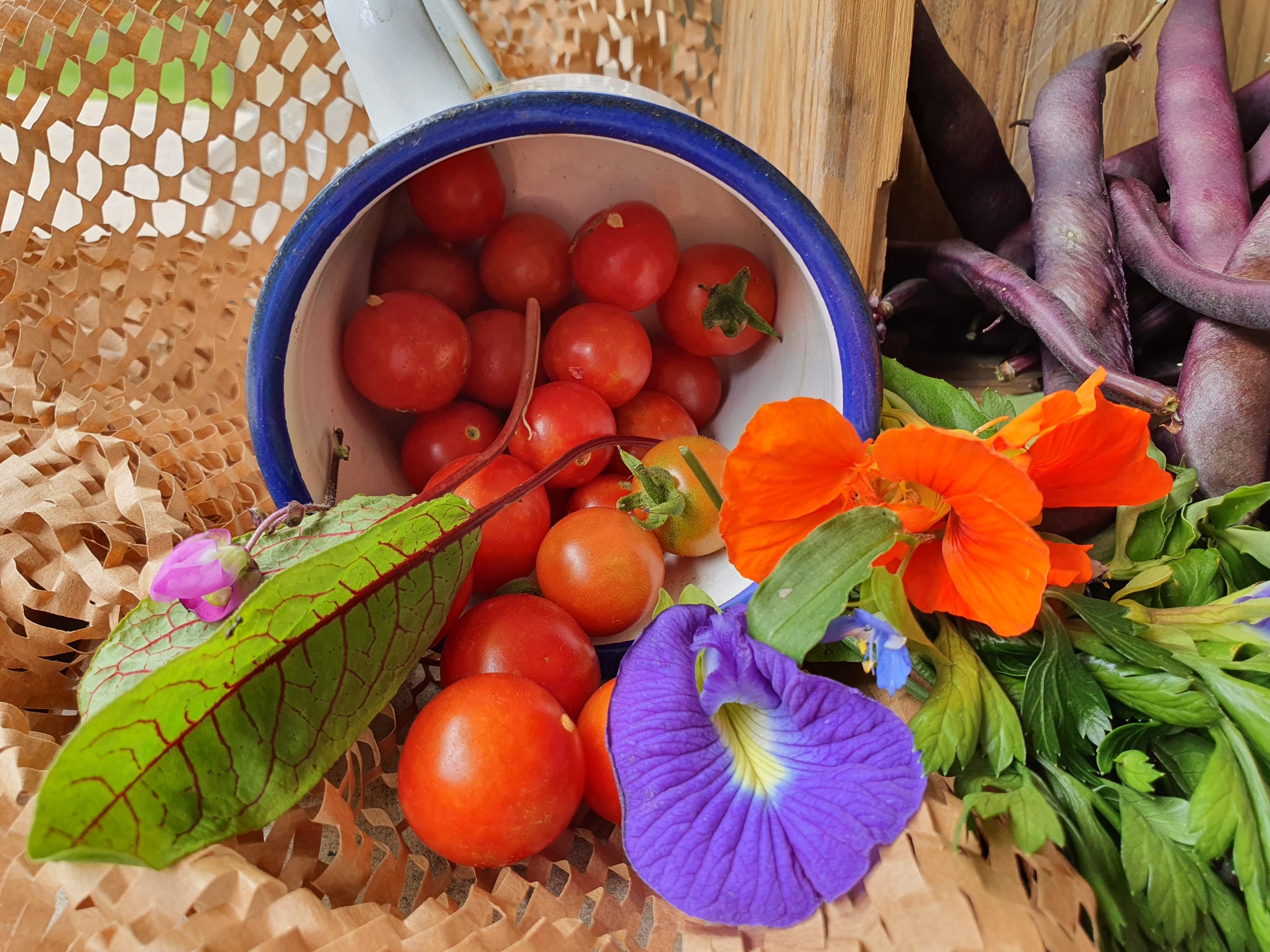
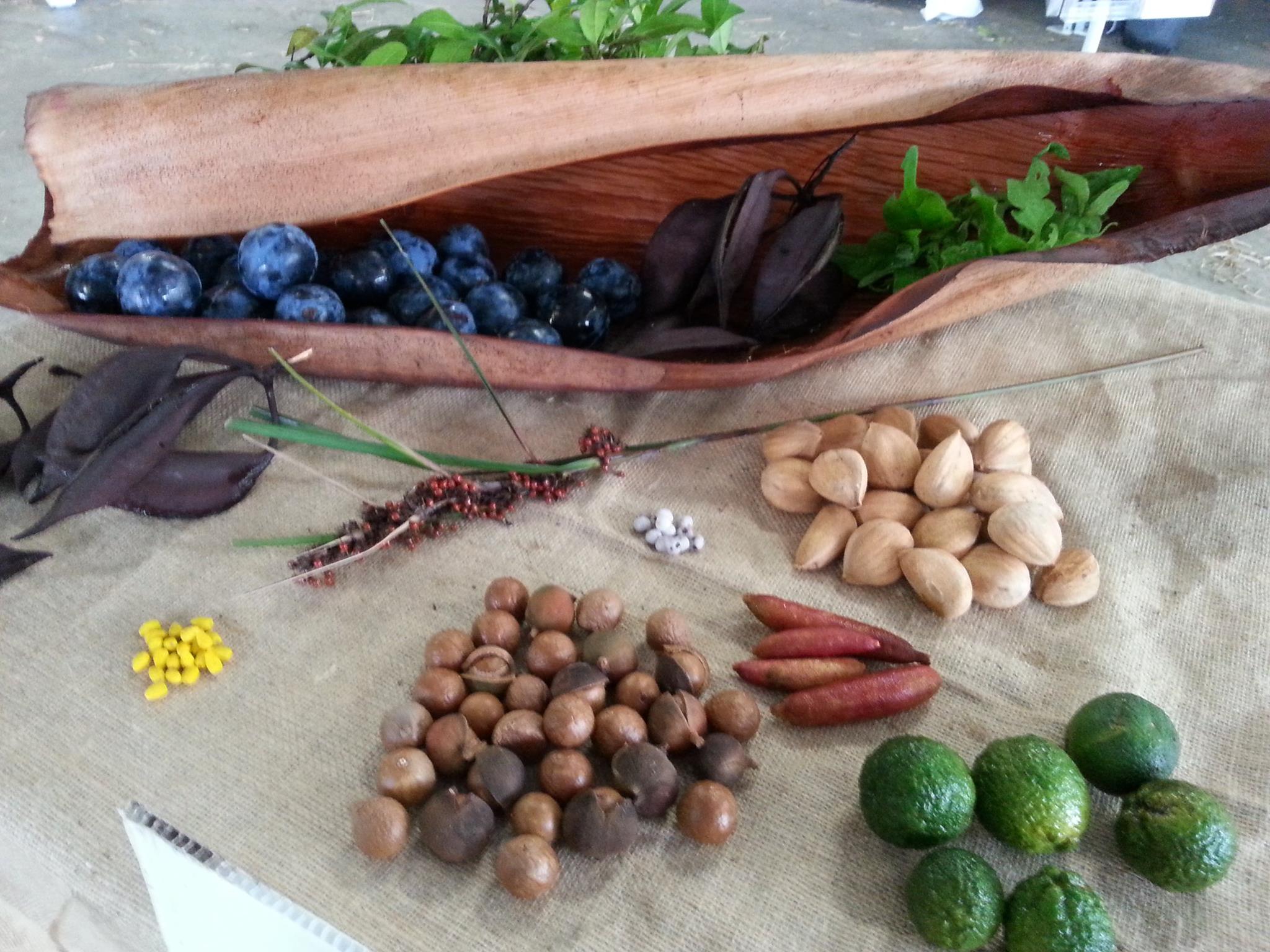
I read books about organic gardening and I used to get that magazine that was published by Neil Douglas and Abby Heathcote and I would read that thing from cover to cover. At Art College I leaned towards making pottery as it seemed eminently more useful than painting pictures that you just hang on the wall and were of no practical use in daily life. Neil Douglas of Organic Gardening fame was a very reputable artist potter and I saw some of his work in the National Gallery of Victoria a few years ago. I see a clear relationship between gardening and creativity. Many artists are inspired by the colours and forms of nature. There are whole schools of art dedicated to painting flowers and wildlife and so on.
A book that changed my life was Bill Mollison and David Holmgren’s Permaculture One. I realised that it formulated a lot of principles which I had already discovered in my own experience of gardening. I set off on a huge adventure to the permaculture community Tagari, at Stanley in North West Tasmania. At that time there was a large visitors centre there and my “bush tucker man” friend of the time, John Palmer, and I stayed at that visitors centre. There we worked closely with the key people who Bill Mollison had recruited to set up this model community. We spent 6 months there. I was working for the newly set up Self-Reliance seed company and John was doing a lot of consulting work. He is still a bush tucker man, now on the Gold Coast hinterland! I have to say the best model garden at Stanley belonged to Bill’s wife of the time, Phyl Mollison (although she was later supplanted by wife number 3). It was a good experience in temperate and cool climate gardening and food production.
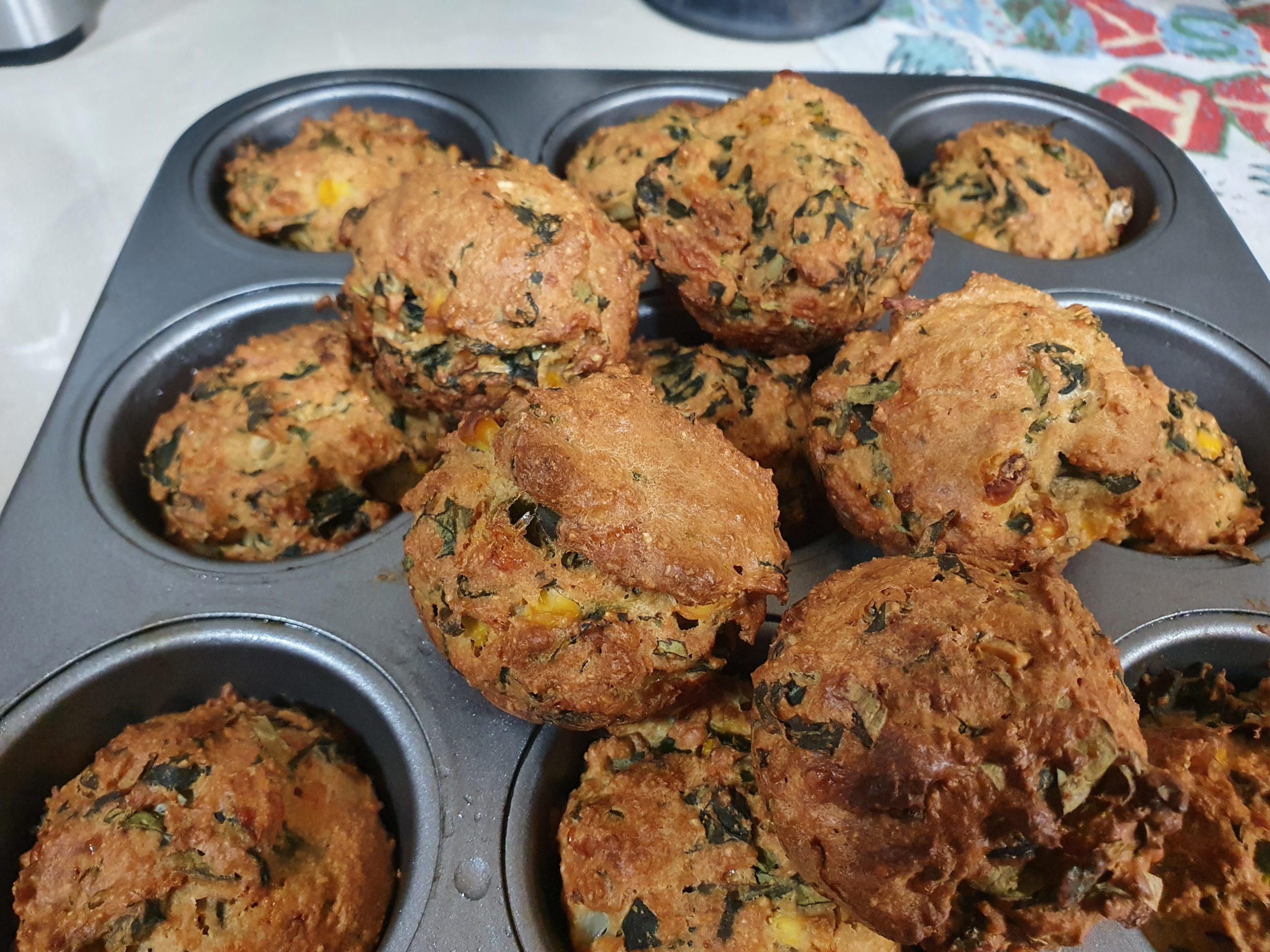
During the COVID 19 era I was known as a grower of seed and a propagator of many plants. I had been writing a garden column for a monthly magazine called Gympie Living and apparently I have a lot of regular readers! Stores could not keep up with the demand for seeds and seedlings and people began to appeal to me for seeds and plants. During 2020 and 2021 when COVID restrictions were preventing travel, I had a little system outside my fence where I would put out the plants that people had asked me for, and I’d have a popstick in the pot with the name written on – Jenny or Paul or whoever – and people would call by and pick them up without having to come into the house or breach any quarantines.
Over the years I’ve been fascinated by herbs and herbal remedies and I’m still reluctant to take allopathic medicines if I can avoid it. In my garden you’ll always find both culinary and medicinal herbs. Another big step in my relationship with plants came about when I was introduced to botanical paper making. Papermaking requires a lot of plant material with plenty of fibre in it. Suddenly I have a use for the stalky plants such as lemongrass, lomandra, dietes, arrowroot, all semi-aquatic juncus and carex species and even the trunks of banana trees whose bunches have ripened.
Studio Trails
I take part in a program called Studio Trails where, for a few days a year, artists open up their studios so that members of the public can see how they make their art. On the very first studio trails in which I participated, I began to get requests from the visitors not just to see the studio but to do a tour of the garden. Once or twice each year, we open up the garden to the public to inspire people about how much can be grown in a small space. Our shared passion for saving seeds endures and we still save seeds and share them. Every year we save seeds from lettuce, salad mallow, southern European spinach, basil, parsley and quite a few other vegetable species that will set viable seed in a subtropical climate. I don’t know for how much longer we will be able to keep this up but we give thanks for our good health to all our fresh organic vegetables and plenty of exercise shovelling compost.
Contact me for my next Studio Trails dates.
